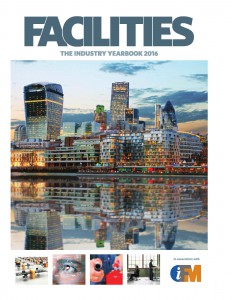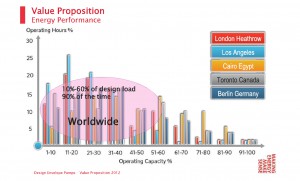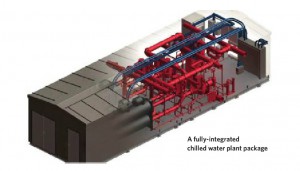 As seen on Facilities the Industry Yearbook 2016
As seen on Facilities the Industry Yearbook 2016
By Steve Cooper, Director – Sustainable Design, Armstrong Fluid Technology
Facilities managers with responsibility for air conditioned buildings often ask how they can improve energy efficiency and drive down utility bills. Typically, access to information is not the problem. The latest BMS technology provides sophisticated data collection and display, with the ability to manipulate data to create statistical reports. The difficulty is how to take the next step - tackling the environmental performance of the building with practical measures (that do not require complete replacement of existing HVAC plant).
This article will explain some important principles of HVAC operation and control that influence the energy efficiency potential of buildings. Firstly, it will discuss variable speed operation and the practicalities of upgrading from fixed speed systems. Secondly it will look at how the efficiency of existing variable speed systems can be improved by the retrofitting of more advanced, demand-based, control technology. Both options offer the facilities manager the opportunity to reduce energy costs and carbon emissions at the same time as driving maximum return on capital investment.
The traditional approach to designing HVAC systems in the past was to use components, such as pumps, chillers or booster sets, which operate at a fixed speed. HVAC systems around the world, however, are at their most efficient if designed for part-load. Whether the demand is for heating or cooling, the same pattern of usage applies. For 90% of the time, throughout their lifetimes, systems operate at between 10% and 60% of their design load (see Figure 1). Despite this fact, many HVAC systems installed in the UK still incorporate components operating at 100% of design load for 100% of the time. This results in wasted money, shortened equipment lifecycles and unnecessary carbon emissions. Replacing fixed speed plant with variable speed equipment (which is more efficient at part load) can be the key to significant energy and cost savings.
For example, replacing constant water volume, fixed speed pumps on three port control, with variable speed, variable volume pumps with two port operation can reduce running costs considerably. Typically, no pipe changes are needed to achieve this. Keep the existing body casing with the inlet-outlet connections in place but remove the rest of the pump set. Replace it with a close coupled pump with integrated frequency inverter (for example an Armstrong DE IVS pump, see Figure 2) converting from three port control valves to two port operation. The by-passes become redundant. With “sensorless” software built into the drive, the motor will automatically sense when the two port valves are opening or closing and adjust the speed, and hence the output, of the pump to suit. Advice from your pump manufacturer will help to ensure that the system design is correct to optimise the variable speed capabilities of the pump.
If your building already has variable speed capability, improved operation could be possible through more advanced control technology. The majority of chiller plants use technology based on independent control loops with PID feedback control. PID feedback loops are able to control a single device effectively, controlling a single variable such as pressure or temperature that is on a single control loop. Any process that has changing conditions would be too complex for PID control, however, and as part of a network communicating and controlling a number of varying devices, it does not have the flexibility to continuously adapt to varying loads that are encountered in HVAC applications. It is an analogue era technology trying to cope in a digital age. The resulting annual average system COP (between 3.2 and 2.2) is insufficient to meet today’s carbon reduction targets. These shortcomings in control strategy explain why so many chilled water systems are underperforming - even those that have been installed over the last few years incorporating sophisticated BMS and variable speed capability.
A solution is to utilise digital relational control technology, for example Hartman LOOPTM, which is capable of treating the entire system ‘holistically’, rather than as individual sub-systems. This provides a number of benefits. Firstly it will sequence variable speed components such as pumps and chillers to operate at their “sweet point” – the position on their Natural Curve at which they are most efficient given the current building load. Secondly, these relational control methodologies have the ability to calculate and determine the best power relationship between the chiller, condenser pump and tower fan, balancing the load between devices to achieve the same net “tonnage” for a lower kW input. So instead of running devices at full speed, and sequencing them on or off to match varying demand, the system components are operated at their peak efficiency at all times, both individually and collectively. This achieves a COP of greater than 7.0 compared to previous averages of between 3.2 and 2.2.
New builds and retrofit
When installing new chilled water systems, a solution is to specify, from the outset, an offsite manufactured, fully-integrated chilled water plant package (such as the Armstrong IPP-CHW, see Figure 2) which incorporates relational control technology. Alternatively a chilled water integrated plant control system (such as the Armstrong IPC 11550, see Figure 3), can be integrated into the design. Another option might be a retrofit relational control solution (for example, the Armstrong OPTI-VISORTM. Technology of this type is ideal for retrofit in buildings with chiller plant less than five years old, with greater than 3 million ton-hrs of operation per year (1,000 tons at 3,000 run hours per year). Each solution optimises the chilled water system automatically and continuously, bridging the gap between theoretical and actual energy savings.
Case study
A retrofit relational control solution (Armstrong OPTI-VISOR) installed in a central government building in London, achieved an immediate 42% reduction in energy usage from existing plant (Figures 6 and 7). It is expected to deliver a 5% reduction in total building carbon emissions and a reduction in running costs of £32,500 per annum. The site had already been extensively refurbished to consolidate civil servants from two separate offices into a single reconfigured building. An investment of around £200,000 in variable speed drives had been made to improve performance, but the actual energy efficiency of the site (as measured for its DEC rating) was still lower than anticipated.
To improve efficiency, an Armstrong OPTI-VISOR was integrated with the site’s BMS. Its control panel links to the site’s BMS enabling it to receive data on plant and to determine the optimal plant operating conditions (quantity of equipment to sequence, speed of pumps and fans) using Hartman LOOP™ control methodology. OPTI-VISOR determines the optimum operating parameters for the plant and communicates this information back to the BMS for the BMS plant automation module to implement (Figure 5).
Controlled ‘holistically’, rather than as three independent control loops, the system benefits from faster response, better stability, the introduction of VFDs on the CW pump, the optimisation of thermodynamic effects at the equipment level, and lower risk of equipment failure through cycling stress. The OPTI-VISOR provides more in-depth analysis and tuning of the plant's operations. It also monitors and adjusts component operation to achieve peak efficiency and also adjusts for changes as individual components age.
In conclusion, today’s systems need to harness the energy efficiency advantages of variable speed components and the capabilities of advanced control technology. This combination of variable speed operation and relational control can enable facilities managers to release energy and cost savings, and provide enhanced levels of environmental performance, for the buildings in their care.
About the author
Steve Cooper is Director of Sustainable Design at Armstrong Fluid Technology. With more than 1000 employees worldwide, operating seven manufacturing facilities on three continents, Armstrong Fluid Technology is known around the world as a leader and innovator in design, engineering and manufacturing of integrated solutions within the building oriented fluid-flow equipment industry. Armstrong products are internationally recognised for design innovation, quality, long service life, and superior operating economy. In 2014 Armstrong Fluid Technology celebrated its 80th year in business and 10th year of operation in the UK. The company serves customers through a network of sales offices, supplying solutions and services to homes and businesses in more than 50 countries. In the UK, Armstrong Fluid Technology has manufacturing facilities in Manchester and Halesowen, West Midlands, and a sales office in London.
For more information contact:
Tel: 08444 145 145
Fax: 08444 145 146
Email: marketing@armstrongfluidtechnology.com
Website: www.armstrongfluidtechnology.com
Address: Wolverton Street, Manchester M11 2ET





